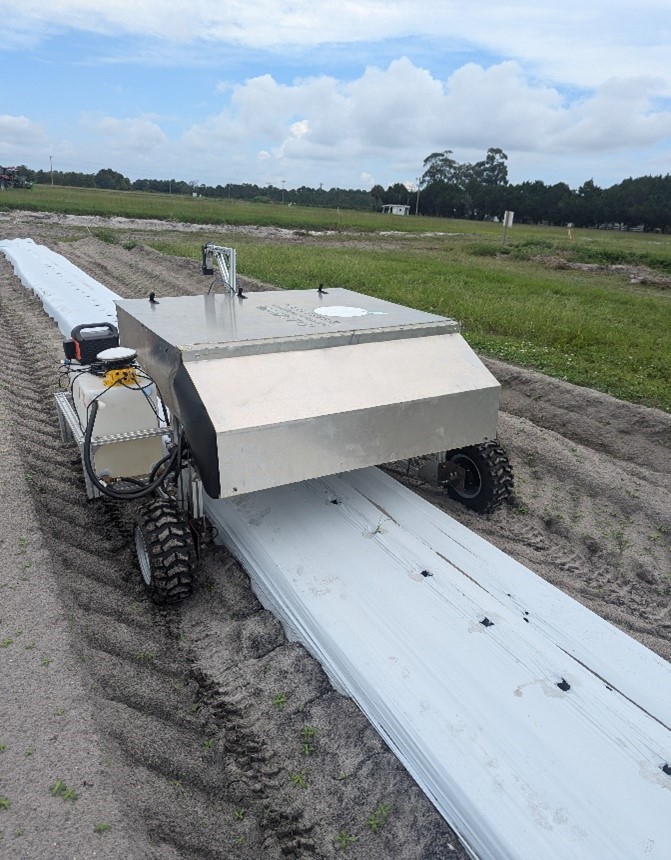
Now, UF/IFAS researchers are designing a machine that can surgically eliminate weeds while preserving the tomatoes and peppers around them, utilizing artificial intelligence (AI) and sensor fusion.
Vinay Vijayakumar, a doctoral student working under the supervision of Yiannis Ampatzidis, created the smart-spraying system that targets weeds on raised beds of soil and in row middles.
The smart machine’s movement is currently operated by remote control, but future advancements will enable it to function as a fully autonomous system, like a robot, Ampatzidis said. The smart-spraying system can also be mounted on the back of a tractor or any other farm vehicle.
Vijayakumar and Ampatzidis use a remote to control the movement of the machine. The machine itself autonomously sprays the weeds around the crops based on its “brain,” a computer-vision system that uses an AI-driven algorithm.
So far, the prototype properly distinguishes 98% of the pepper and tomato plants and 85% of the weeds, said Vijayakumar. The machine-vision system then takes information from the camera and relays it to the spraying system, which sprays the detected weeds.
“With this setup, we aim to achieve high spraying accuracy to cover the entire raised bed width while maintaining a spray strong enough to prevent drift and reduce off-target spray,” Vijayakumar said.
Ampatzidis, an associate professor of agricultural and biological engineering at the Southwest Florida Research and Education Center, said they haven’t tried the precision weed sprayer on commercial farms yet. But they’re getting a lot of interest in this technology from the growers who have visited their lab.
“Because of its targeted application, you don’t have to use as much herbicide, so you can help preserve the environment and reduce manual labor,” Ampatzidis said.
In the future, Ampatzidis and Vijayakumar see great potential to work with major farms in Southwest Florida on their prototype sprayer.
“From our interactions and experience, farmers would be more open to adopting this technology faster than other precision application technologies because it is an improvement in the existing inefficient spraying method and has fewer unknowns,” Vijayakumar said. “We should be ready for a demo of the product in front of the growers before the end of the year. Its final adoption in local farms could occur in the next few years.”
If the precision weed sprayer works, it will add to the growing list of technology that Ampatzidis has designed in the last several years. Those include Agroview and technologies that count citrus trees and separate bruised strawberries from fresh ones.









